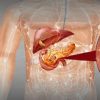Goa is abuzz with excitement as vintage bike and car owners, users, collectors and fans are decking […]
Who is a Functioning Alcoholic and What are the Alcoholic Types?
Sober living August 10, 2020This type of alcoholic may require specialized treatment to address their underlying issues and prevent them from engaging in criminal behavior while under the influence of alcohol. It’s important to remember that alcoholism is a disease, not https://bioaccesstechllc.com/alcoholic-cardiomyopathy-is-especially-dangerous/ a moral failing. With the right treatment and support, those struggling with intermediate familial alcoholism can overcome their addiction and lead healthy, fulfilling lives. If you suspect that you or someone you know may be a functional alcoholic, it’s important to seek help as soon as possible. There are many resources available, including support groups, counseling, and medical treatment. Don’t let the facade of “functionality” fool you – alcoholism is a disease that requires professional attention and care.
Types of Alcoholics: Understanding Each Could Save a Life
They’re also likely to have bipolar disorder, depression or social phobia. Group members are more likely to be unmarried college students without full-time jobs and drink less frequently than the other groups but are more prone to binge drinking. They’re mostly male and rarely seek help for their alcoholism, but when they do, they usually turn to 12-step programs. Alcohol Use Disorder (AUD) is a medical condition characterized by an impaired ability to stop or control alcohol use despite adverse social, occupational, or health consequences. It encompasses a spectrum of drinking behaviors, ranging from mild to severe, and is diagnosed based on specific criteria outlined in the Diagnostic and Statistical Manual of Mental Disorders heroin addiction (DSM-5). The types of drinkers are social drinkers, binge drinkers, heavy drinkers, and problem drinkers.
Factors that Contribute to Functional Alcoholism

This type of alcoholic can balance their personal and professional responsibilities while living with addiction. Often, they don’t seek 5 types of alcoholics help for their drinking until they experience significant health problems. About a tenth of American alcoholics are chronically severe alcoholics.
Medically Assisted Treatment (MAT)
- Suddenly, alcoholism wasn’t a character flaw—it was a medical condition with distinct subtypes.
- It can also help prevent seizures or other complications that may arise.
- Below, we explore what “alcoholic” really means, the stigma around the term, and the different types of alcohol misuse.
- They experience broken or unhealthy relationships due to their alcohol misuse, which may lead to bouts of violence.
- It’s essential to seek help early on to avoid further negative consequences.
This section will explore what alcoholism is and highlight the importance of identifying different types of alcoholics. In initial studies, type I alcoholics frequently exhibited high harm avoidance, low novelty seeking, and high reward dependence (Cloninger 1987a), personality characteristics indicating high levels of anxiety. Type II alcoholics often exhibited a reverse personality profile, with low harm avoidance, high novelty seeking, and low reward dependence. This combination of traits also describes people with antisocial personality disorder (ASPD) (Cloninger 1987b) and is consistent with findings that type II alcoholics frequently suffer from ASPD (Gilligan et al. 1988).
- Type 1 alcoholism affects both men and women, requires genetic AND environmental predisposition.
- This group has the highest rates of emergency room visits and treatment seeking.
- They tend to drink less frequently than people of other types (an average of 143 days a year).
- Although many people in this group do eventually “mature out” of heavy drinking, some carry the habits into later adulthood where the damage becomes more severe.
- In the UK, the legal drinking age is 18, meaning that individuals in this category often fall into this age group or are younger.
This category also has addictions to cigarettes, marijuana, opioids, and cocaine. This subtype is comprised of high-functioning alcoholics who are able to maintain relationships and careers despite their alcohol addiction. This subtype represents 19.5 percent of all alcoholics, who are mostly middle-aged individuals.

The use of the terms “alcoholism” and “alcohol abuse” frequently overlaps in the alcoholism literature; therefore, the terms are used in this article as they were used in the original studies cited. Genetics can influence how the body processes alcohol, leading some individuals to feel its effects more strongly than others. This increased sensitivity can lead to an increased risk for addiction and dependence. Treatment for AUD can be offered in various settings, including inpatient or residential facilities, outpatient care, and peer support groups like Alcoholics Anonymous, SMART Recovery, and Women for Sobriety. The choice of treatment setting depends on the severity of the addiction, individual needs, and available resources. To diagnose AUD, the DSM-5 criteria consider factors such as the frequency and quantity of alcohol consumed, the inability to control alcohol use, and the presence of negative consequences related to alcohol.
Nova Recovery Center Austin, Texas.
They are also likely to be regular smokers and use other substances, including marijuana, cocaine, and opioids. This research helped scientists identify several different types of alcoholics. Understanding these categories provides more insight into alcohol addiction and the effective treatment options for people suffering from alcohol use disorder (AUD). An assessment helps professionals create a treatment plan that meets your unique needs and preferences. You can identify different types of alcoholic treatment you prefer, such as individual therapy, group therapy, family therapy, or 12-step programs. You can choose between male or female treatment providers, inpatient versus outpatient services, and holistic treatment to support your recovery.















